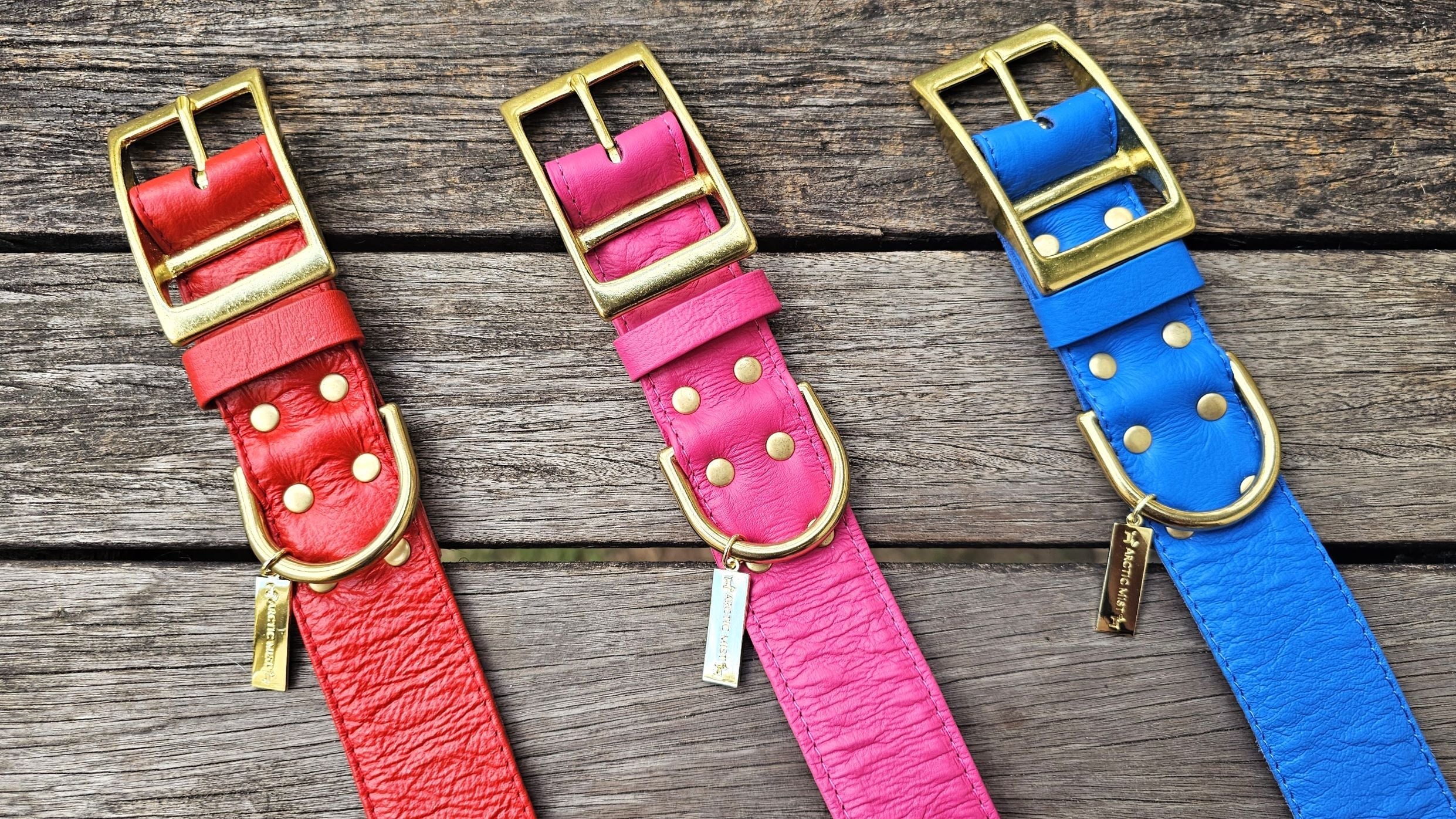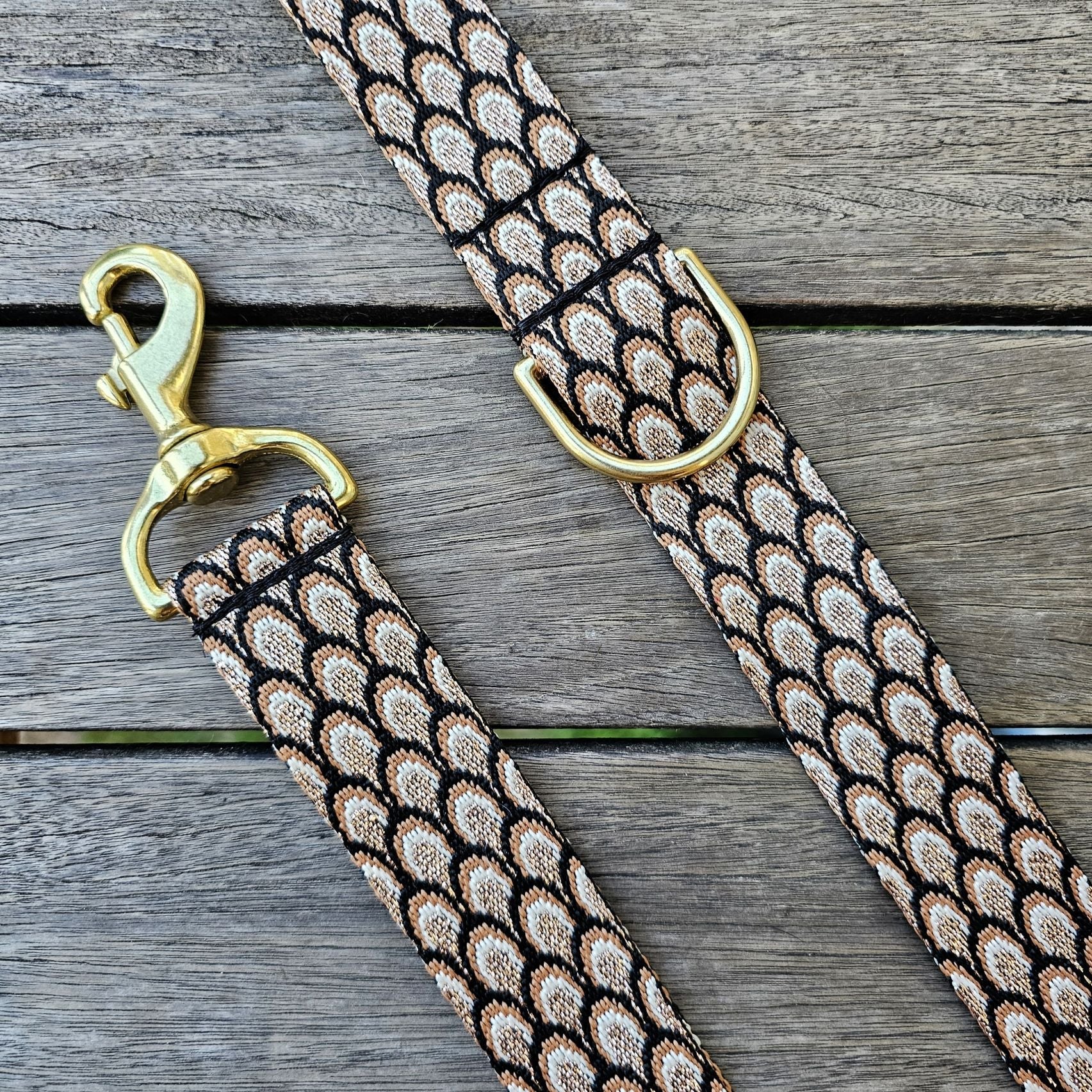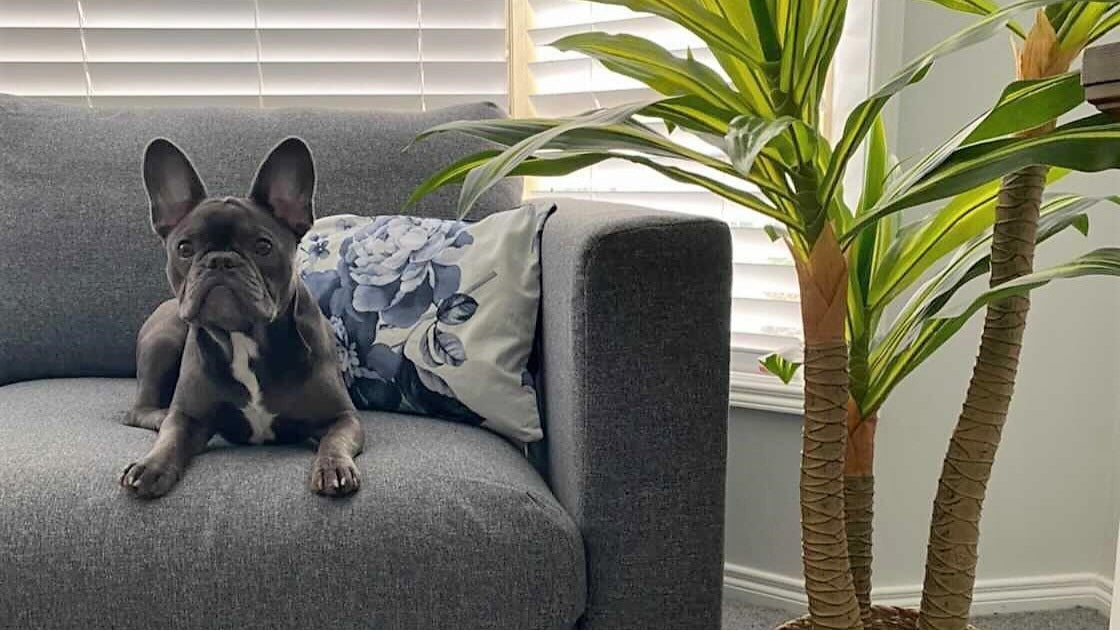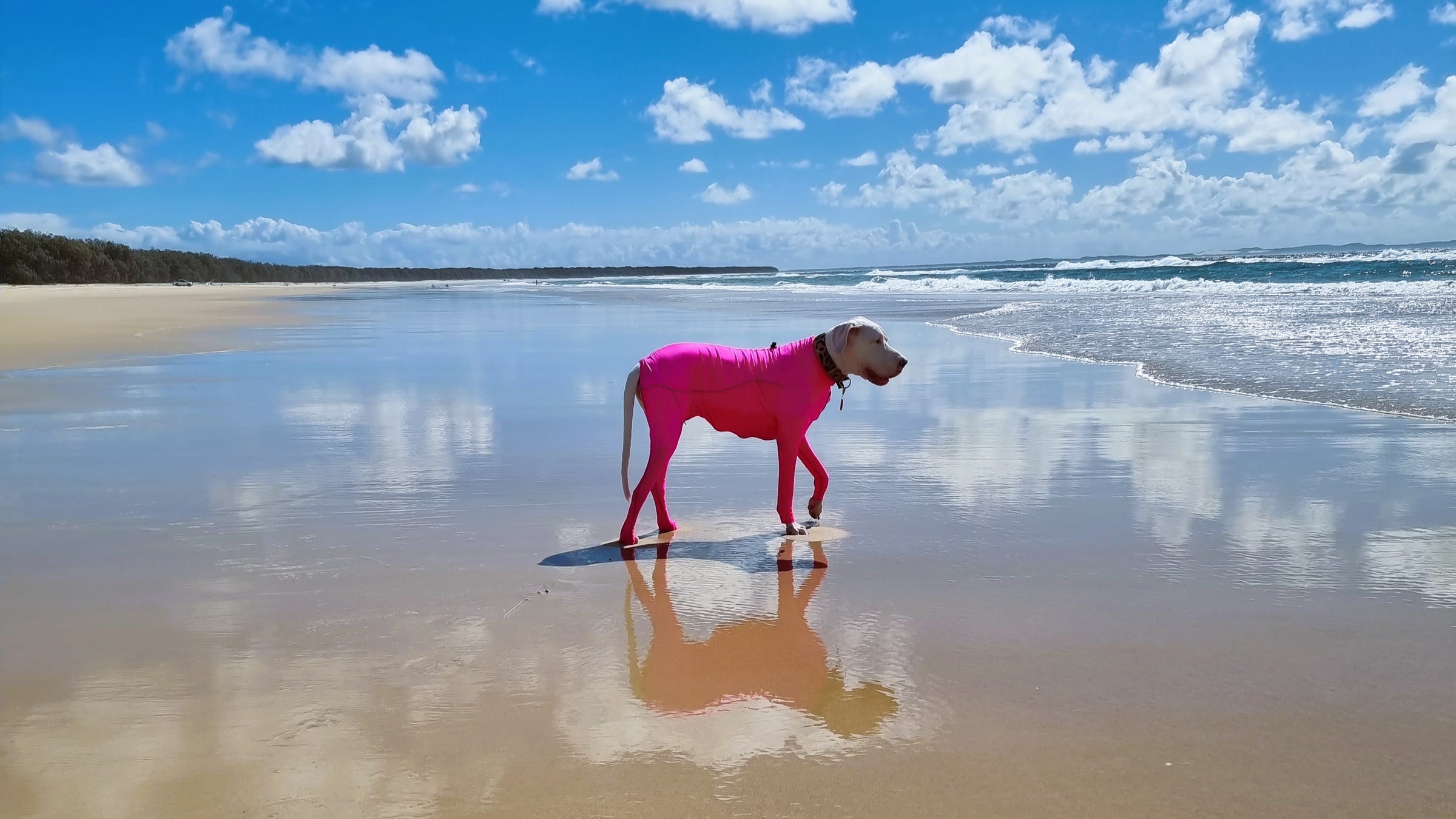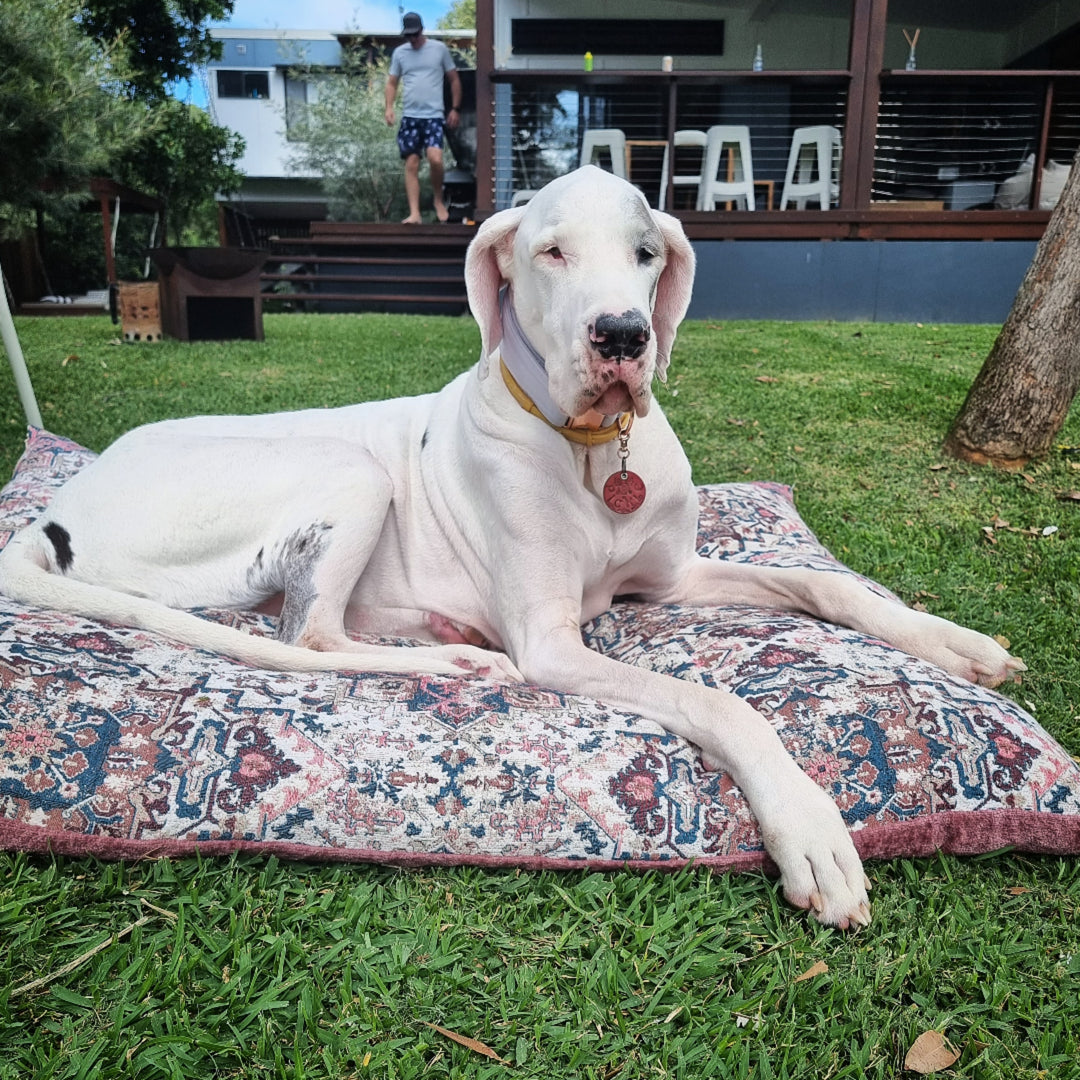How to Care For Giant Breed Dogs
As the proud dog mum to a gorgeous Great Dane, I’ve devoted myself to understanding how to care for giant breed dogs. These big love bugs can bring so much joy to your life, but their impressive stature also requires special care. So here’s a full rundown on the specifics of how to care for a giant breed dog.
When I take my girl Pickle (or Aquadane Arctic Mist, as she is officially known) out into public, I often get the same question. Are big dogs harder to take care of?

The answer is no…and yes. Because size doesn’t necessarily equate to the level of care your dog needs. We all know that we’d do anything for our fur friends, big or small. And we also all know that a miniature poodle can seem to have more energy than a greyhound at times!
Giant dogs can be a total joy to live with. They excel at a variety of jobs and sports, but many are equally happy lolling around on the sofa as an oversized lapdog. However owning a dog of such size, weight, and strength does come with some additional commitments and challenges.
So whether you’re wanting to know if an extra-large dog is right for your lifestyle, or you just want to understand how to take the best possible care of your gentle giant - you are in the right place.
Let’s break down the intricacies of how to care for giant dog breeds, so we can understand their needs a little better.
The Definition of a Giant Breed DogTo start, let’s define what makes a giant breed dog, well….giant!
Here’s a list of breeds that are generally considered to be in the ‘extra-large’ or ‘giant’ breed category:
- Akita
- Anatolian Sheepdog
- Bernese Mountain Dog
- Bloodhound
- Borzoi
- Bullmastiff
- Great Dane
- Great Pyrenees
- Great Swiss Mountain Dog
- Irish Wolfhound
- Leonberger
- Mastiff
- Neopolitan Mastiff
- Newfoundland
- Otterhound
- Rottweiler
- Saint Bernard

If you own one of these majestic breeds or have a mix of these in your dog’s DNA testing results, then you’ll want to take into consideration the extra care and attention they might need.
And with these breeds weighing in between 40 - 80kgs (or more!), it’s easy to see why they need unique care and handling.
Size MattersHaving a larger-than-life canine needs careful consideration, especially when it comes to your lifestyle.
- Housing - Do you have enough space for your giant breed to move naturally and lounge around? Do you have somewhere for them to sleep? Do you have an ample & secure yard for them to stretch those long legs in safely?
- Travel - Have you got a car that can house a giant breed? Will your local public transport accept larger dogs? It’s also important to know that some hotels or venues only allow dogs of a certain size, so you might need some trusted sitters for when you are away.
- Handling - Not only are giant breeds more to manage in daily interactions, but we witnessed firsthand how important this is to consider if they ever need medical rest. About 1 year ago Pickle was diagnosed with a bulging disc in her lower back, which causes her to be unable to walk. So that means transporting a 60kg dog by hand! This condition flares up occasionally, which has meant investing in ramps for all elevations like stairs and cars. Thankfully Pickle is doing much better with the right care and supplements, but it’s something to bear in mind for sure.
- Cost - A supersized dog means supersizing your monthly dog budget. You will need to budget for higher insurance costs, bigger food bills, a larger crate, and increased vet fees if you require X-rays, scans or medication.
- Breeding - It’s important to think about what your giant breed was built for, and understand the potential challenges that may come with this. While plenty of positive training and socialisation can build a well-rounded dog, if it's in their DNA to bark, hunt or protect (as many were) you’ll want to make sure you account for this. If buying from a breeder, do your research and make sure they are an ethical registered breeder, find out about the temperament of the parents, and try to speak to people that have dogs from the same breeder to gauge their temperament.
- Common Health Issues - It is also important to know about common health issues relating to your giant breed. For example Great Danes are prone to GDV (bloat), a life threatening condition which requires very costly emergency surgery. If you are buying from a breeder, ask them what health testing they do on the parents and if there is a history of any health issues. If you are getting a rescue dog, find out as much as you can about their history, and make sure you know what is involved with any known health issues they might have.

While all dogs need training and enrichment, a giant breed’s size makes this extremely important. Having an unruly, destructive, or over-enthusiastic puppy that grows up to be heavier than you isn’t ideal!
The sooner you can start training, the better you are serving your giant breed dog. If you feel a little overwhelmed at the task ahead, then find a professional dog trainer that can help you out. You won’t regret it, I promise.
One thing I will add here is that giant dogs might be big, but they are so sensitive. Like with any dog, training should be fun, positive, and reward-based. This way they will look to you for guidance, enjoy being handled & listen closely to commands. Not only will it deepen your bond, but it could keep both of you safe too.
Joint Care For Extra Large Dog BreedsCongenital joint disease of the shoulders, elbows, knees, and hips is most commonly seen in large and giant breeds of dogs. This means taking proactive steps to protect your dog’s joint health is key with these bigger breeds.
Slower growth with strictly managed exercise is key as your little giant grows up. Although they might look big enough for long hikes and rough play - they won’t actually reach skeletal maturity until as late as 2 years old. For that reason, it’s your job to make sure your puppy refrains from prolonged exercise or high-impact activities.
For more tips, read our dedicated Dog Joint Health blog. It’s full of great advice for all breeds on how to keep those bones healthy.

Be sure to speak frequently with your breeder or vet about your breed’s specific nutritional needs, to make sure they’re getting everything their large body needs without creeping into obesity.
Diets that favour joint health will always be a good idea for larger dogs, so look for foods that contain glucosamine, omega- 3 fatty acids, and omega-6 fatty acids.
It’s also wise to know that certain large breed dogs are more prone to GDV ‘bloat’ - a life-threatening condition where the stomach fills with gas and expands. This can then cause the stomach to rotate, blocking blood flow. This can happen when your dog eats either too quickly, or too close to hard exercise. So be sure to invest in a slow feeder if you have a canine hoover on your hands, and refrain from giving big meals for at least an hour before or after vigorous walks.
If your giant breed is prone to bloat, make sure you are aware of the symptoms and signs. If you suspect your dog has bloat, you should take them to a vet immediately.
Giant Breed Dog BedsIt goes without saying that a giant dog needs a bed that can stand up to their needs. Not only to offer them the ability to relax in comfort but to support their joints efficiently too.
When we first adopted Pickle, I found it very hard to find a dog bed large enough for her that offered the support she needed. I also didn't want to compromise on style by resorting to a floor mattress or other human equivalents.
So I decided that if the world needed supportive, comfortable & stylish beds for these gentle giants to enjoy…then I’d be the one to make them! This is exactly why I created the Arctic Mist range for my very own Pickle; a special selection of luxury handmade dog beds, using the finest, high-quality materials that make your life as a pet parent easy.
Our luxury inserts contain shredded furniture quality foam to provide the support required for heavy dogs, while the addition of fibre makes the bed more comfortable. Finished with easy-wash, anti-hair & uber-stylish covers, there’s a range of XL sizes specifically for those gentle giants. And designs for every kind of pooch and home decor!
Available as extra large indoor and outdoor dog beds that are built to last, your giant breed dog finally has the options they need to find the perfect resting place.

Giant dogs might have some unique care needs, but I’ve found they are uniquely special. Given the right environment to thrive, they bring joy into your life in a truly super-sized way. Not only that, but they bring joy to everyone they meet also!
Arctic Mist started with just a small range of beds and matching throw cushions, and I have since started making luxury collars, leads & bandanas. Because although there are lots of stylish accessories for small dogs, the options for large dogs are much more limited.
So why not check out our range of gorgeous accessories for your big lovebug? And show the world just how special they truly are.
More To LoveI hope this guide on how to care for giant breed dogs has helped you to understand what these extra-large canines require to live a long & happy life. Learning how to take care of big dogs is a great way to set your relationship up for success.
Do you have a giant breed dog? What’s your top tip for helping them feel comfortable, healthy & happy every day?





